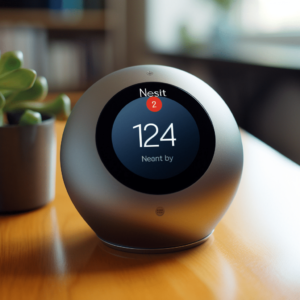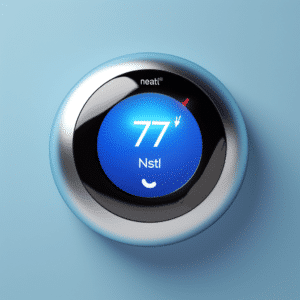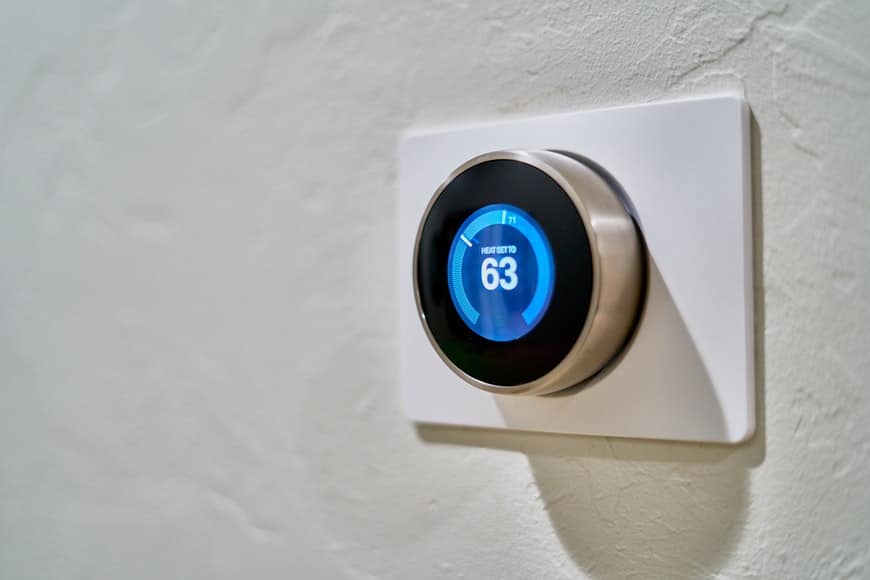Nest thermostat problems: Nothing is as frustrating as settling in the house on a cold night or hot summer day, only to realize your Nest thermostat is malfunctioning or not functioning at all.
Unfortunately, like most homeowners, such heating problems come with a significant load of inconvenience and frustration. But we must consider that your Nest thermostat can get structural or mechanical faults that may need repair or replacement.
Some units can experience problems caused by the owners. At the same time, other Nest thermostats can quit due to operating for years. Either way, you are bound to repair your Nest thermostat one time or another.
But before taking steps to fix it, what are the common problems with Nest thermostat you have at home. Let’s dive in.
Table of Contents
How To Tell If Your Nest Thermostat Is Bad

Fortunately, the cool thing is how easily you can troubleshoot your Nest thermostat and get it working as before. But before troubleshooting the thermostat, you have to know what problem your Nest thermostat has to fix the best solution.
To guide you on this, here are the tell-tale signs to know whether your Nest thermostat is wrong or has a recurring problem.
The thermostat has a short run time.
If your Nest thermostat fails to run within the required timeline, then you could be facing one of the most common issues to do with power.
Remember, each Nest unit has rechargeable lithium-ion batteries, which recharge every time the device is in use. If the thermostat’s runtime is short, you could be working with a faulty battery system or flawed wiring system.
Motion sensing won’t work
The Nest thermostat also has an inbuilt motion sensor that adjusts the room’s temperature whenever someone is home. At times, this motion sensor can fail to work correctly or not work at all. You can consider checking the Nest app connectivity or whether the thermostat has trouble communicating if this happens.
The thermostat disconnects from Wi-Fi unexpectedly
If your Nest thermostat keeps going offline to the Wi-Fi network, chances are you might need to reset your network settings.
In particular, such Wi-Fi problems could be due to connectivity issues, especially the status of the Wi-Fi network. Check that the router settings are compatible with your Nest unit and no Wi-Fi interference is possible.
Thermostat Produces Strange noise
Your thermostat producing strange noise such as thumping, stuttering, or chattering might mean an internal malfunction or mechanical problem.
In addition, you might also hear a clicking or thumping inside the Nest thermostat unit on different occasions. This noise could be the result of the thermostat system rapidly switching on or off.
Short Heating and Cooling Cycle
The Nest thermostat could also be heating and repeatedly cooling in short periods. Such rapid cycle changes could mean you have an issue with your cycle schedule that needs repair or maintenance.
Thermostat Displays Delayed
Once you set your Nest thermostat, the screen can display a delay notification such as “heating is delayed for 2 hours.” Such messages are expected when the Nest Thermostat faces power issues, especially matters of wiring.
Thermostat Displays Error Codes
Chances are, you are bound to meet different error codes either on the thermostat or in the Nest phone app.
These error codes tend to begin with a letter, then a number specifying each unique Nest thermostat problem, for example, N80 or E73. If an error code appears, you should go to Nest’s troubleshooting page and check the solutions provided.
Thermostat Changes Temperature Unexpectedly
Your Nest Thermostat could also have a damaged temperature schedule which makes the unit change temperature unexpectedly. If you see such fluctuating temperature, then head over to the Nest thermostat page and learn how it works or whether you need to make changes.
Nest Thermostat Troubleshooting
Despite facing these common problems with the Nest thermostat, the cool thing is that you can troubleshoot these issues and avoid frustrations. Here is a guide on the standard solutions to try out and fix your Nest thermostat problems.
Conduct A Maintenance Schedule
At times, all it takes is to have your Nest thermostat get a professional maintenance checkup and get it back to working usually. If you plan to have a DIY maintenance schedule, you can start by switching off the thermostat and checking for any faulty parts in the system.
Dust or cleanup the interior components and wiring system in case debris has accumulated inside. Even a simple screen problem could be stemming from a lack of proper maintenance.
Check Your Nest Thermostat Compatibility
The Nest thermostat could be incompatible with the installed cooling system making the unit unreliable for effective cooling or heating. For example, the Nest thermostat is compatible with a 24V cooling system, and anything less makes the thermostat unpredictable in the heating and cooling cycles.
Reset And Restart Your Nest Unit
Sometimes all your thermostat needs is a quick reset and restart to resolve significant issues you could be facing with the Nest thermostat. Here, you will have to turn off the fuse or cut power to the Nest thermostat altogether.
Once the unit is off, wait for five minutes, then turn the Nest thermostat back on for the reboot. Check whether the Nest reconnects to your home systems correctly and whether your problem is solved.
If this does not work, you are free to try manually resetting the Nest device from inside.
Reaffirm Proper Wiring
Any appliance is as good as the wiring inside, and the case is no different with your Nest thermostat.
For instance, the Nest thermostat would need a revamped C wire responsible for fixing the delayed cooling or heating issues. But, it is best to leave it to the professionals for wiring issues since the internal system could be a bit tricky.
Nest Thermostat Delayed
The “Delayed” message on your Nest thermostat indicates low power.
The more recent Nest thermostats have internal rechargeable lithium-ion batteries. These batteries act as backup batteries.
The Nest backup batteries will start up and save your Nest data and settings if your power goes out for any reason.
There is no replacement for these rechargeable batteries.
As the rechargeable batteries start to run low, the Nest Thermostat will begin to fail.
As a result, you will see a “Delayed” message on your Nest thermostat. This notification denotes low power.
Remove the Nest thermostat’s display, plug it into a USB port, and let it charge for two hours to solve the problem temporarily. For a long-term remedy, you must attach a Common (C) wire to your furnace and Nest.
Nest Thermostat Motion Sensor Not Working

The motion sensor in your Nest thermostat should turn on when you walk by it, illuminating the device’s face. If this doesn’t happen, there can be a power problem, or the motion sensor might have frozen during a software update.
Try charging your Nest thermostat completely or restarting the device to solve this problem.
Nest Thermostat Not Cooling
One of the following four causes is likely to blame if your Nest thermostat isn’t cooling:
- Thermostat wires with incorrect labels
- Circuit breaker tripped
- RC/RH wiring problems
- Fuse blowing inside the air handler
If none of those seem to be the cause of the problem, you can attempt these extra troubleshooting techniques:
- Check your cooling system’s compatibility with Nest
- Reinstall your old thermostat
- Restart your Nest again
It’s recommended to call a professional if you’ve tried everything above and are still experiencing cooling problems. They will be able to identify all the electrical issues you cannot. They can also manage the project safely.
Nest Thermostat Installation Problems
Like other devices, you are likely to encounter issues after installing a Nest thermostat. The 12 most frequent problems with Nest thermostats are listed below:
- Instead of releasing cold air, the vents discharge heated air.
- The “Rh” wire is not powered.
- There is no click from the Nest button.
- Low battery problems exist.
- The temperature fluctuates too much.
- The thermostat is unresponsive and blinking.
- A delayed mode is activated on the thermostat.
- The thermostat regularly loses WiFi connection.
- The thermostat frequently turns on and goes off.
- The thermostat is short-cycling.
- The fan keeps running nonstop.
- A Nest thermostat sensor fails
Contact Nest Support
If all the steps don’t work out, you could be working with an underlying problem inside your Nest thermostat.
In such a scenario, the best move is to contact Google Nest Customer Support for further help. Contact the support team and report the problem you face and what troubleshooting steps you have implemented.
Are Nest Thermostats Reliable?
Despite these common problems with Nest thermostat, the brand still provides one of the most popular and reliable intelligent thermostats.
The Nest brand comes with plenty of temperature preferences, features, and settings for your heating and cooling. Overall, the Nest Thermostats are reliable and help make life easier and more enjoyable even when away from home.


